
views
Removing Dirt and Stains
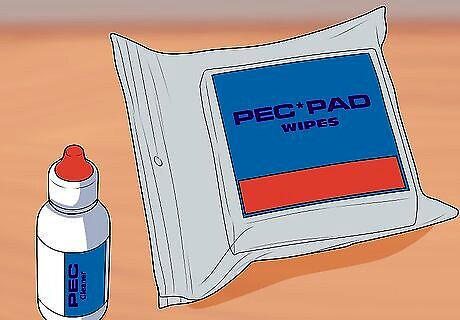
Use supplies specifically made for cleaning photographs. As old photos are delicate, you should never use generic cleaning supplies on them. You should use photograph emulsion cleaner and wipes specifically made for cleaning photographs only. These items can sometimes be difficult to find in stores, but should be easy to purchase online. Emulsion cleaners and wipes are made from ingredients and materials safe to use on older photographs. They resemble normal cleaning wipes and spray cleaners, but use less harsh ingredients. Do not substitute cleaners. While getting specialized supplies is a hassle, it's worth the extra cost to avoid damaging your photographs. Before you begin the cleaning process, back up your photos digitally. While proper cleaning minimizes the risk of damage, it does not completely eliminate it.
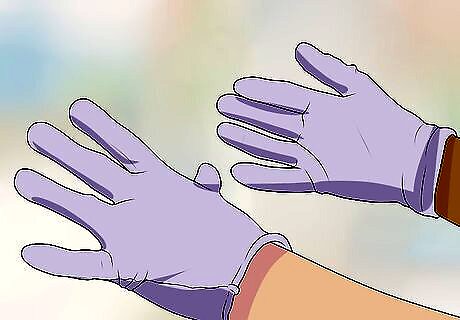
Put on editing gloves. Before handling your photographs, put on a pair of clean editing gloves. Like other supplies for cleaning photographs, these can be purchased online. It's important to use editing gloves over generic gloves when cleaning photographs. Editing gloves are a type of glove designed to be used when working with film and photographs.
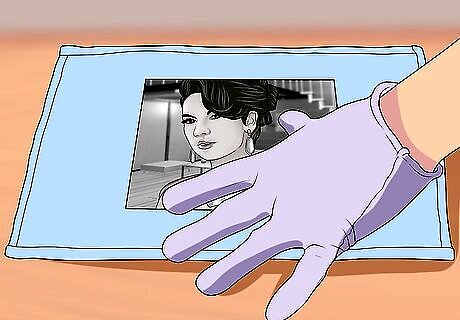
Place the photograph on top of a towel. Lay a clean towel down over a flat surface. Place your photographs on the towel. Make sure to wear your editing gloves, even at the beginning of the process, to avoid damage.

Brush off dirt. Use a can of compressed air. Blow the air over the photo to remove any stuck on dirt or dust. You can also use a soft cleaning brush, which may work better for very delicate photos. Blow or brush the photograph as long as is needed to remove any excess dirt or debris. It's important you get any dust and dirt off before wiping down the photos. You do not want to get debris plastered onto the photos when wiping them down.
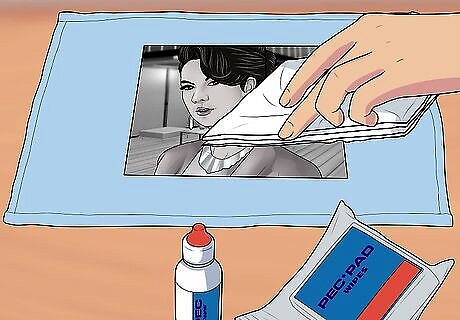
Wipe off any lingering debris. Take your cleaning pads. Gently wipe down the surface of the photographs to remove any residue left on the photos. Use extremely slow hand movements to avoid tearing the photographs. Move the wipes over the photograph, removing any set-in debris and dirt as you go. The precise instructions for using cleaning pads varies depending on the type of pad. You should always closely read the manufacturer's instructions before using a cleaning pad.

Dry your photographs. Hold a hairdryer set on high heat about 10 inches away from your photo. Move the hair dryer back and forth slowly. This should dry the photo off. Keep moving the hair dryer back and forth until the photo is completely dry. It's very important to keep the hairdryer a solid distance from the photograph to avoid heat damage.

Seek professional help for difficult stains. Some photographs may have very set in stains that do not respond to routine cleaning. You do not want to use harsh cleaners or clean your photographs too aggressively on your own. Look online to find professional photography cleaning services in your area in the event you're dealing with very difficult stains. It's better to spend extra money on professional services than risk damaging irreplaceable old photographs.
Dealing with Rare Photographs

Clean only the viewing glass of ambrotypes. Ambrotypes are old photos that often consist of two plates of glass. One plate contains the image while the other, the viewing glass, covers the image. Only clean the viewing glass and only do so if you know which is the viewing glass. The viewing glass should be cleaned with cotton swabs dipped in alcohol. Only do a light wipe down, to rub away any unwanted dirt and grime. Stay away from the corners and sides when cleaning, as you do not want any liquid to seep into the picture and harm the image. If you purchased the image somewhere, the paperwork may inform you which side is the viewing glass. You can sometimes tell by examining the photo carefully. Photographers often used a black lacquer on one side of the glass to darken it. The image is found on the glass opposite the black lacquer. If you do not know for sure which side is the viewing glass, take your ambrotype to a professional. You can severely damage ambrotype pictures by cleaning the glass that contains the image.
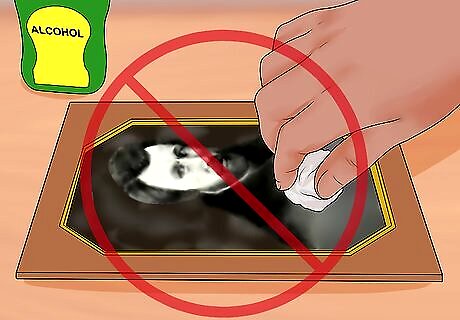
Do not clean daguerreotypes. Daguerreotypes are another antique form of photography from the 19th Century. Due to their extremely delicate nature, daguerreotypes should not be cleaned by amateur collectors. Always take daguerreotypes to a professional for cleaning. You can find a professional in your area by searching online. If you can't find one close by, see if you can find a professional you can work with long distance. Someone may be willing to mail your photos back and forth.
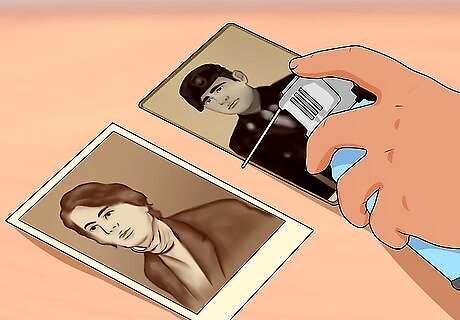
Use compressed air on vintage cartes and cabinet cards. Vintage cartes and cabinet cards should never be cleaned with liquid. Blow a can of compressed air above these types of photos to remove dirt and debris. If dirt is not removed with compressed air, use a very soft brush to wipe it away using extremely delicate motions. Very dirty cartes and cabinet cards may not come clean with compressed air alone. In this case, seek professional cleaning services.
Preserving Your Photos
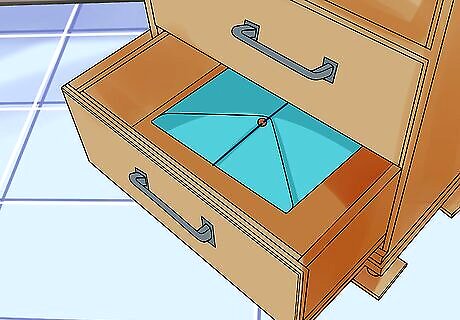
Store your photographs in a dry environment. Once your old photographs are clean, store them in a protected area that is also dry. You can, for example, put them in an envelope and store them in a drawer in your home that is not prone to moisture or humidity. This should keep your photos in good shape after the cleaning process. If your photos are very old, consider professional storage. You can check online to find companies in your area that provide specialized storage for old, valuable photographs.
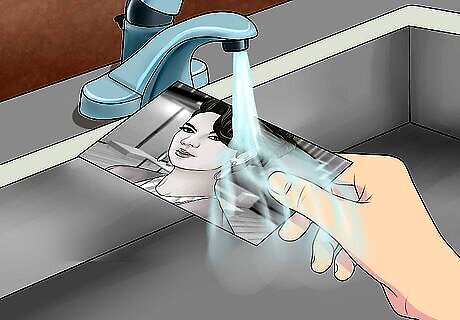
Remove new stains quickly. The quicker you clean out stains, the better. If you spill anything on an old photograph, or get dirt on it with your fingers, clean it promptly to prevent the stains from becoming set. Stains can quickly be removed by running photographs under tap water or placing them in a pan of water briefly. Swish the photograph around to remove any stains.

Minimize how often you handle old photographs. Handling old photographs infrequently will protect them from damage. Old photographs are fragile, so it's important not to over handle them. Only handle photographs when absolutely necessary, such as when you're moving. For the most part, keep them in storage to preserve them over time. It can help to have digital copies of your photographs. This way, if you want to look at old photographs, you can do so on screen to avoid handling them.




















Comments
0 comment